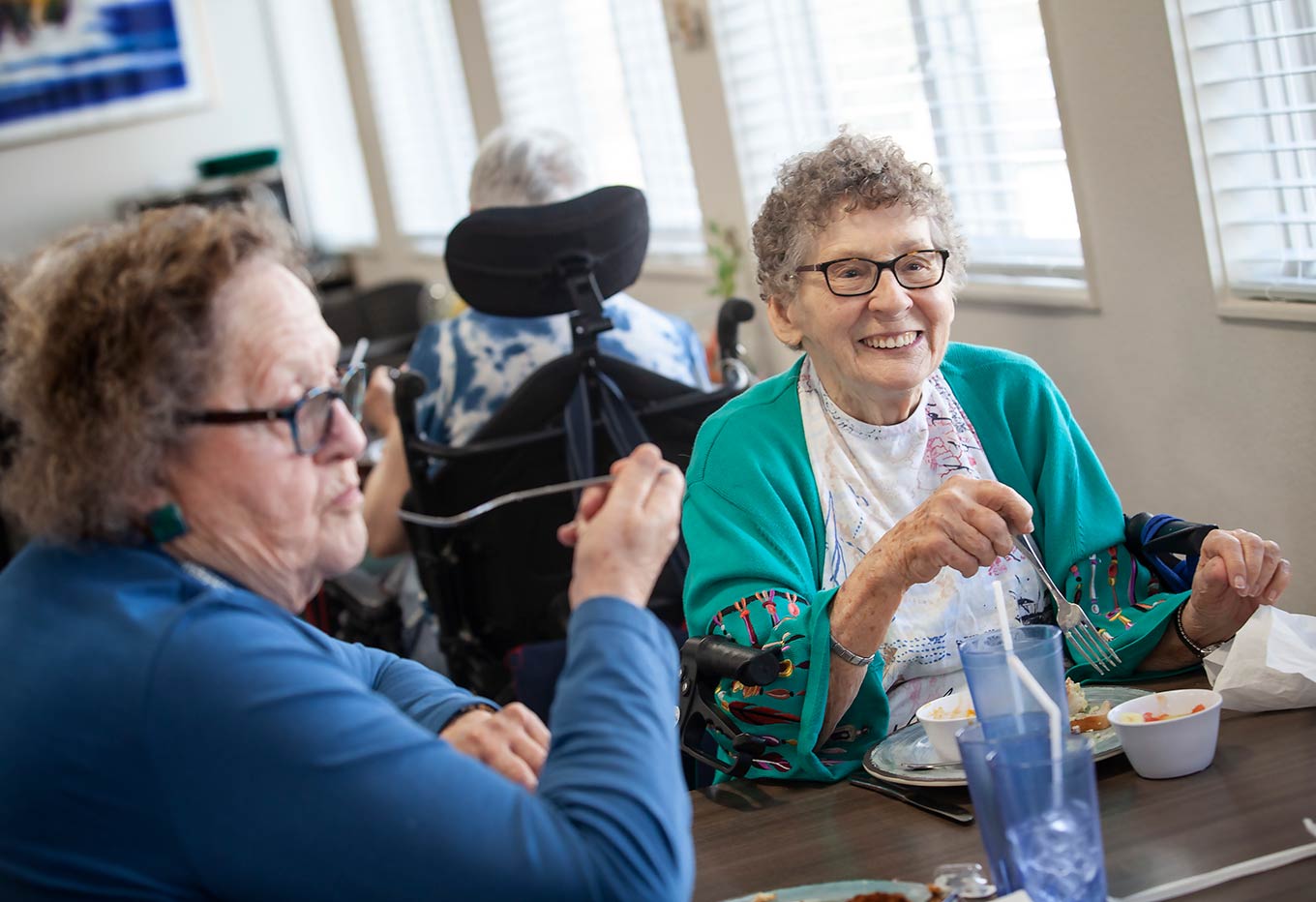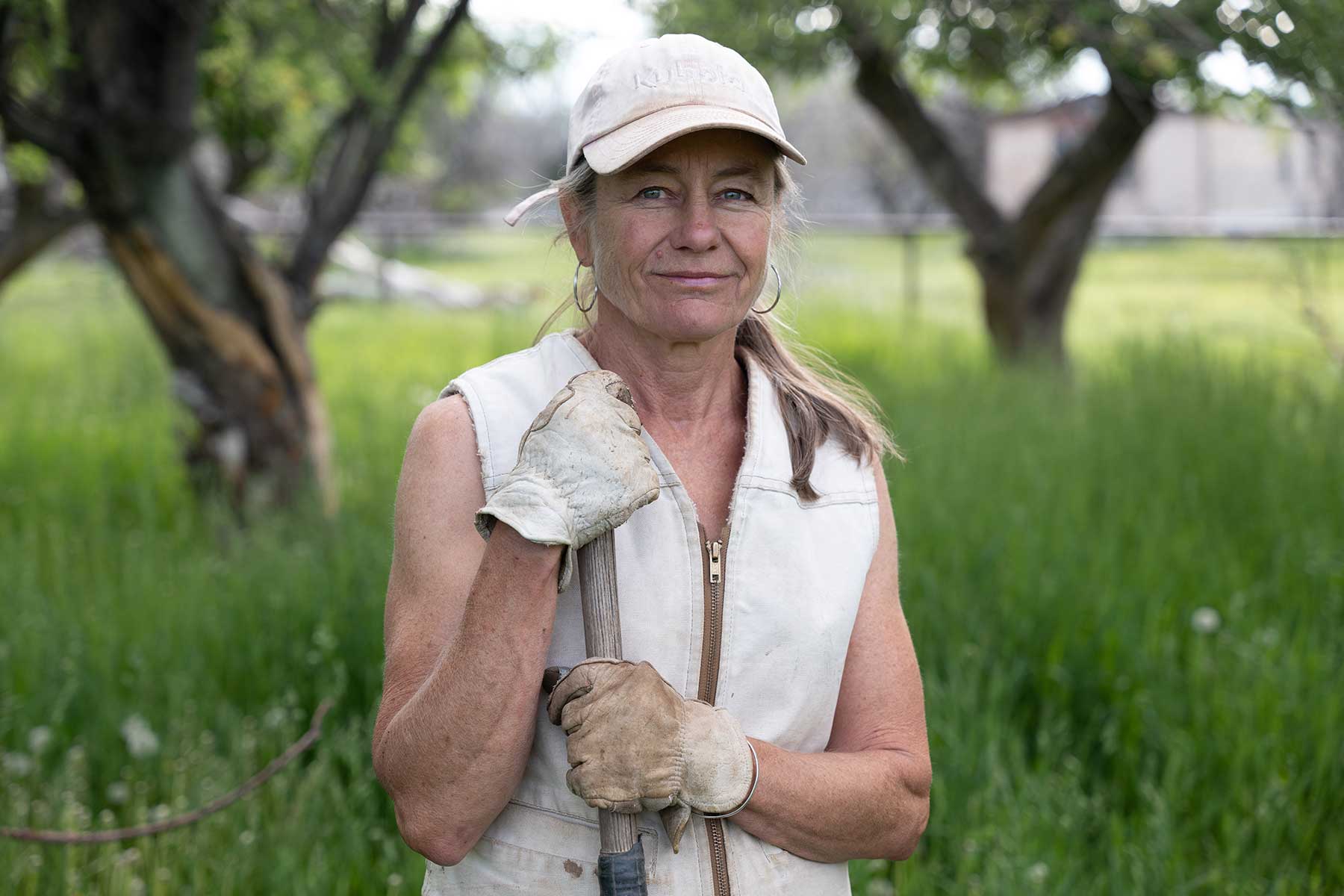Ask child development advocates in Colorado Springs to point to a map and mention the first neighborhood disparity that comes into their heads, and the answers come thick and fast.
Unlike other major cities in Colorado, notes Zachary McComsey of the Legacy Institute, an education and community nonprofit, Colorado Springs is divided among a handful of school districts. While it’s easy to work and play in the shadow of beautiful Pikes Peak and assume all is fine, McComsey said, the differences between wealthy Academy District 20 and Cheyenne Mountain District 12, and poverty-strained Harrison 2 and central District 11, are stark.
District 20 was just in the news lamenting its college matriculation rate had dropped to 71%. Yet the college-entrance rate in Harrison 2 is likely 20%, McComsey said—but they don’t even know for sure because they haven’t had funding to keep track.
At the Urbanites Leading the Pikes Peak Region neighborhood empowerment center just south of downtown, meanwhile, leaders struggle to keep nets on the basketball hoops and weeds from overtaking the court. At Cheyenne Mountain, more than 80% of students go to college, and perennial lacrosse and tennis champions train at world-class facilities.
Urbanites’ J.J. Frazier helps raise $1,000 scholarships for low-income Harrison students—but often scrambles to find addresses to mail the checks to, after transient families have moved multiple times.
“And when you have students who are having difficulty in school, it’s hard-pressed to get parents to show up for conferences, because they might have two or three jobs,” Frazier added.
A new national study attempts to quantify and illuminate these gaps between neighborhoods in America’s largest cities, including Colorado Springs and Denver, by assigning “opportunity” scores to each census tract and highlighting the sometimes radical differences in scores for children living just a couple of miles apart.
The Child Opportunity Index 2.0, released in January and led by Brandeis University’s Heller School for Social Policy and Management, details the life-altering differences for children depending on the zip codes into which they are born or follow their parents. Study authors say The Geography of Child Opportunity: Why Neighborhoods Matter for Equity is “the first time we have a single, consistent metric of contemporary child opportunity for every U.S. neighborhood.”
“The racial inequity when you look at conditions for kids, it’s just very striking,” said co-author Dolores Acevedo-Garcia, PhD, professor of human development and social policy at Brandeis and director of the Institute for Child, Youth and Family Policy.
The opportunity index scores for Colorado Springs and Denver—the two Colorado cities large enough to be included in the study—are actually not as dire as for older U.S. cities with longer histories of entrenched poverty.
Colorado Springs, for example, rates an overall, metro-wide opportunity score of 55 out of 100, with ratings based on factors (and social determinants of health) such as graduation rates, ratio of green space, access to early childhood education, food deserts, home ownership and more. Overall, the city doesn’t do as well as Minneapolis, which has an overall score of 80, or San Jose, at 82. Colorado Springs sits squarely in the middle tier, with San Diego, Detroit and Charlotte. Some of the lowest overall opportunity scores go to Bakersfield, Calif., Memphis and Tucson.
Acevedo-Garcia, though, prefers to look at differences between neighborhoods to tell a more complete story in a city. The census tracts at the low end of the opportunity index in Colorado Springs—which correspond roughly with traditional neighborhood boundaries—have a median score of 24; these are primarily south and east of the city center, according to maps paired with the opportunity index. The highest neighborhoods in the city score a median of 87; again, think Cheyenne Mountain and near the Broadmoor. That leaves what Brandeis calls a “child opportunity gap” of 63 in Colorado Springs.
This disparity is obviously not ideal. But compare it to an industrially devastated city like Detroit, Acevedo-Garcia said, where at first glance the overall opportunity score looks similar to Colorado Springs, at 55. Yet in Detroit, she noted, some neighborhoods score only a 2 while the richest tracts score a 95. That leaves Detroit with an opportunity gap of 93, an indicator that the city is even more segregated by poverty, race and opportunity than other metro areas, and families may feel locked into their circumstances.
“A much lower gap speaks to the extent of inequality that people experience every day,” Acevedo-Garcia said in an interview. “What you would experience in Detroit is a very high poverty rate, much higher unemployment, high vacancy rates in housing, less access to green space, much lower proficiency rates in schools, and no experienced teachers in schools.”
The Brandeis study and website allow each city’s results to also be filtered by race. Looking at Colorado Springs through that lens, a far higher portion of the city’s Hispanic and African American children live in low-opportunity neighborhoods, with high-opportunity neighborhoods, including near the Air Force Academy or Cheyenne Mountain, being overwhelmingly white. Such racial gaps by neighborhood are reflected in almost every major U.S. city.
Still, Acevedo-Garcia said, there are important differences between places like Colorado Springs and Detroit, a contrast that is talked about specifically at length in the national report. Hispanic children may be concentrated in the lower opportunity neighborhoods of Colorado Springs, but their opportunity score is 46; nationally, the score attributed to Hispanic children is 33. That indicates Hispanic children in Colorado Springs have somewhat more opportunities to advance than those in, say, Milwaukee or Buffalo.
“There is no way around the issue of race and inequity, but what we can tell you is that the picture of inequity in both the gap and the racial issues is not as stark [in Colorado Springs] as it is in other parts of the country,” Acevedo-Garcia said.
McComsey agrees that the equity story in Colorado Springs is complex, but also points out that the opportunity report’s “you’re not so bad” conclusion for the city doesn’t help the families struggling to bridge economic gaps day to day. Colorado Springs is a sprawling city, with some of the widest boundaries in the nation, and going from high-end schools in Academy District 20 to a neighborhood school southeast of downtown is jarring, he said.
Transportation to bigger opportunities is a huge issue for downtown kids, McComsey said, with limited public transit, districts with low budgets and working parents.
“A northern [Colorado Springs resident] doesn’t know about the Harrison district and doesn’t come downtown, and they would never vote for a transportation tax of $10 a month because they drive their own kids to school,” said McComsey, who co-founded the Atlas Prep charter school focusing on urban needs.
The Urbanites’ Frazier agreed, noting transportation as one of the reasons it’s hard to get consistent attendance at school or after-school programs in Colorado Springs.
“During the summer, we have a summer enrichment program on site run by another organization,” Frazier said, “and their enrollment is 25 or 26 children, but it’s sporadic. They might come one day but not the rest of the week. They don’t have transportation, or they have to stay home and take care of siblings.”
For Denver, the scores are shifted somewhat but still reflect a wide gap between neighborhoods, and an enormous gap depending on race.
Denver’s lowest neighborhood scores are at a median of 21 in the opportunity index (primarily to the southwest and northeast of the city center, mapping shows), while its highest neighborhoods have a median of 95 (think Cherry Creek, Crestmoor and Hilltop). That leaves an opportunity gap of 74, higher than Colorado Springs but not as high as cities singled out in the report such as Detroit, St. Louis or Philadelphia.
Clicking through the charts by race, though, tells a more disturbing story. More than 58% of white children live in Denver’s “high” or “very high” opportunity neighborhoods, according to the index. But only 12.5% of Black children live in those neighborhoods. Sixty-nine percent of Hispanic children live in Denver’s “low” or “very low” opportunity neighborhoods.
The opportunity gap researchers don’t want anyone patting themselves on the back for noticing relatively positive scores. This 2.0 version is more refined and statistically broadened from the previous iteration, which Brandeis researchers were encouraged to see utilized by many cities to help promote equity policies and programs.
For example, Chicago’s public health leaders are using the data to explore correlations between low opportunity and health outcomes, Acevedo-Garcia said. Teen pregnancy and lead poisoning have strong correlations in the lower opportunity neighborhoods, and Chicago will use that information to help direct grant programs and other work, including during funding applications by neighborhoods. A medical center in Boston is using the opportunity scores to inform its public engagement and community benefit work, she added.
“People tend to be one-dimensional and stigmatize neighborhoods with the one measure of poverty levels,” Acevedo-Garcia said. “This is a more complex measure and speaks to distribution of opportunity,” instead of just distribution of income. Brandeis plans to continue improving and repeating the scores, and expects communities will use the data to track neighborhood changes over time.
McComsey, Frazier and others said they will keep looking for new ways to help families across such opportunity gaps in Colorado Springs. Priorities, McComsey said, include “more preschool, more transportation, more bridges to college.”
“We’re a much more conservative city in terms of taxation,” McComsey said. “But we’re going through a lot of urban growth, too. I don’t think the Springs has a lot of tools in its tool kit for urban planning.”




